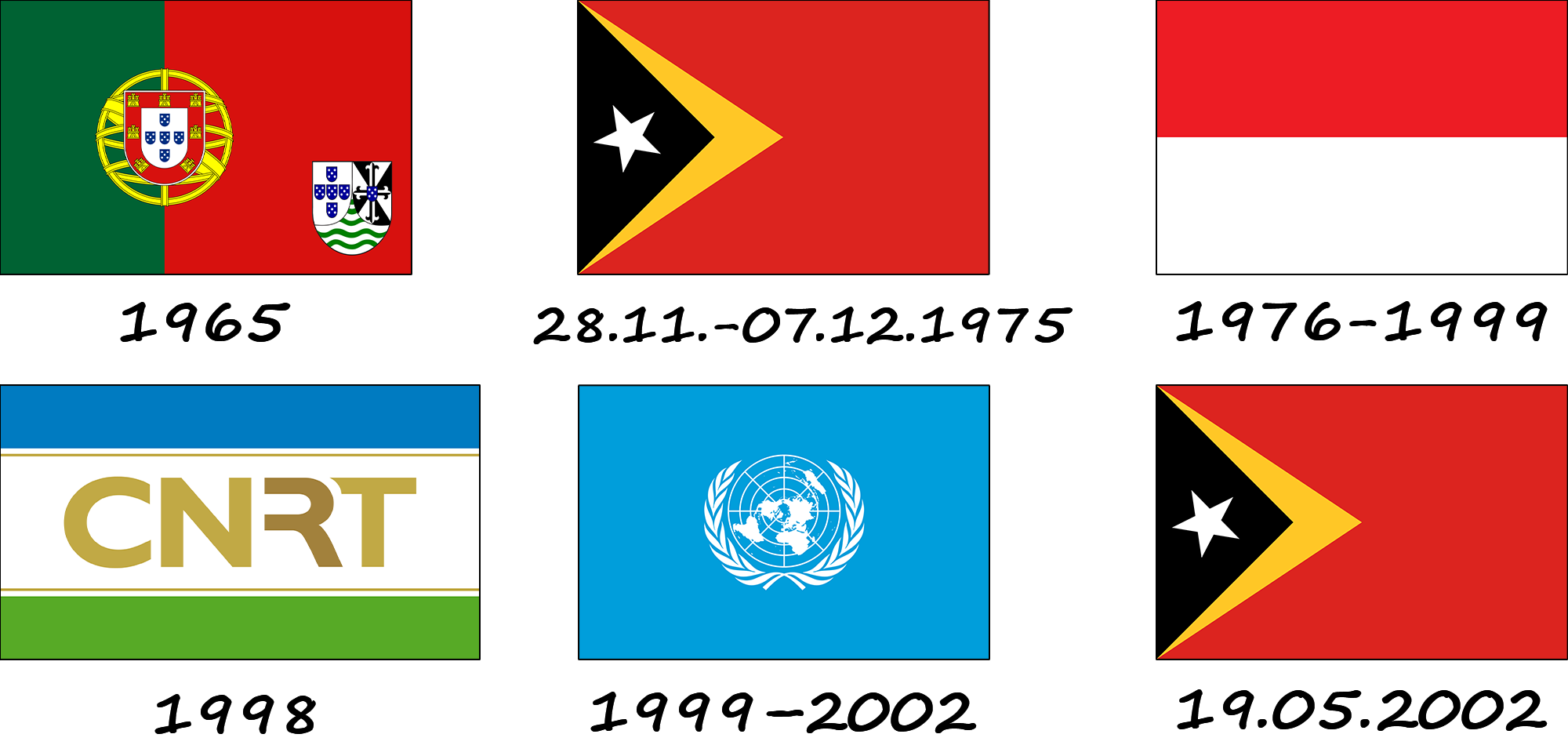East Timor did not have its own national flag until it was incorporated into the Portuguese Empire. A flag similar to the modern one was first used in 1702. A proposal to adopt a modified version of the Portuguese flag as the symbol of East Timor was made in 1965, but was not accepted by Portugal. Although the country declared independence in 1975, its flag was only flown for a short time as Indonesian troops invaded the country.

From 1976 to 1999, when East Timor was part of Indonesia, the red and white flag of Indonesia was used. During the constituent congress in 1998, a new flag of resistance against the Indonesian occupation was proposed - the CNRT (National Council of Resistance of East Timor), after which the United Nations flag flew over the country. This flag became a temporary symbol of the country, and in 2002 it was decided to return to the flag used in 1975. On May 19, 2002, the UN flag was replaced by the flag of East Timor.




